#Pilgrimage Road
Text
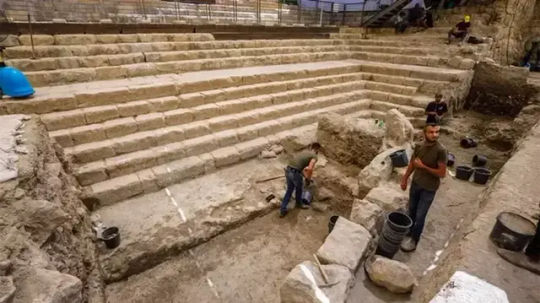
Biblical Steps Where Jesus 'Healed a Blind Man' Unearthed by Archaeologists
In Jerusalem, a recent excavation effort uncovered stairs that had been hidden for more than 2,000 years near the spot where the New Testament says Jesus treated a blind man.
A new excavation project in Jerusalem has unearthed steps unseen in over 2,000 years at a place where the New Testament records Jesus as having healed a blind man.
The Israel Antiquities Authority, the Israel National Parks Authority and the City of David Foundation early this year announced that the Pool of Siloam, a biblical site cherished by Christians and Jews, will be open to the public for the first time in 2,000 years in the near future.
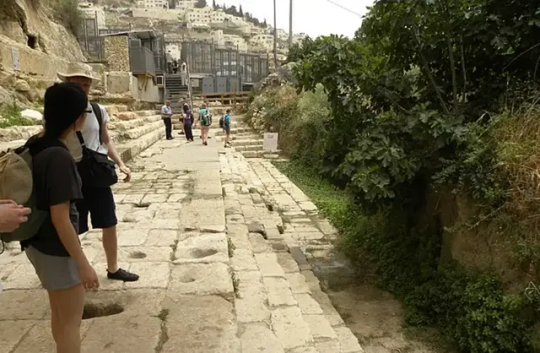
In recent weeks, archeologists achieved significant progress in the excavation, unearthing some eight steps descending into the Pool which had not been seen in 2,000 years — around the time when Jesus walked the Earth.
“The ongoing excavations within the City of David — the historic site of Biblical Jerusalem — particularly of the Pool of Siloam and the Pilgrimage Road, serve as one of the greatest affirmations of that heritage and the millennia-old bond Jews and Christians have with Jerusalem,” Ze’ev Orenstein, director of International Affairs – City of David Foundation said.
“Not simply as a matter of faith, but as a matter of fact,” he added.
The City of David Foundation is a non-profit organization established in 1986, “dedicated to the preservation and development of the City of David and its environs, and is committed to connecting people of all faiths and backgrounds to ancient Jerusalem.”

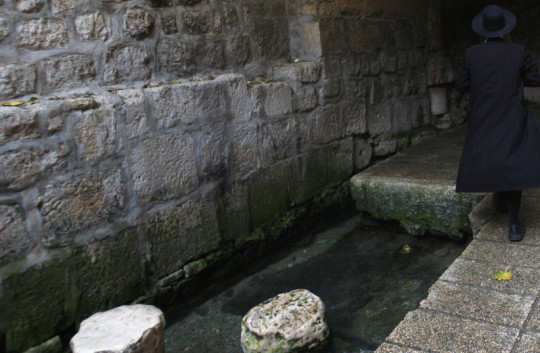

“The half-mile running through the City of David, from the Pool of Siloam in the south, continuing along the Pilgrimage Road, up to the footsteps of the Western Wall, Southern Steps and Temple Mount, represents the most significant half-mile on the planet,” Orenstein said.
“There is no half-mile anywhere on Earth which means more to more people – not to millions, but to billions — than the half-mile that is the City of David,” he added.
The pool was first built roughly 2,700 years ago as part of Jerusalem’s water system in the eighth century B.C.
The construction unfolded during the reign of King Hezekia as cited in the Bible in the Book of Kings II, 20:20, according to the two Israeli agencies and the City of David Foundation.
According to estimates, the Pool of Siloam passed through many stages of construction and reached the size of 1.25 acres.
According to a passage in the Gospel of John, Jesus restored the sight of a man born blind at the Pool of Siloam.
A small section of the pool, which has been fully excavated, has been accessible to the public for several years.
The vast majority of the pool is being excavated and will either be opened piecemeal or once the entire site is unearthed.
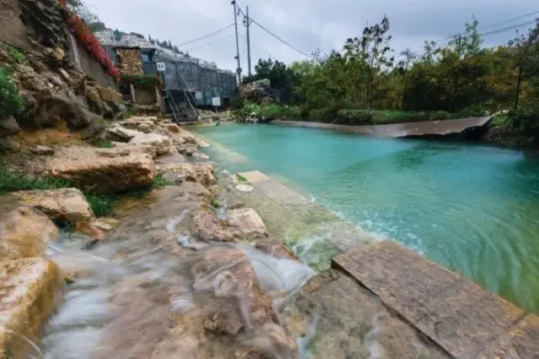
Rev. Johnnie Moore, president of the Congress of Christian Leaders, told Fox News Digital in January that, “In the Pool of Siloam, we find evidence of history preserved for us, revealed at just the right time.”
“Theologically, it affirms Scripture, geographically it affirms scripture, and politically it affirms Israel’s unquestionable and unrivaled link to Jerusalem. Some discoveries are theoretical. This one is an undeniable. It is proof of the story of the Bible and of its people, Israel,” he said.
A stroke of luck revealed the pool in 2004, when infrastructure work carried out by the Hagihon water company uncovered some of the pool’s steps.
The Israel Antiquities Authority, under supervision of professors Roni Reich and Eli Shukron, launched a survey.
As a result, the northern perimeter, as well as a small section of the eastern perimeter of the Pool of Siloam, were uncovered.
“Whether in the halls of the United Nations, ongoing efforts by Palestinian leadership, or on university campuses, Jerusalem’s Biblical heritage is under assault,” said Orenstein.
Orenstein noted that in few years time, visitors to the City of David will be able to witness the factual history for themselves and “see with their own eyes, touch with their own hands, and walk with their own feet upon the very stones their ancestors walked thousands of years ago, as they made their way to Jerusalem on pilgrimage.”
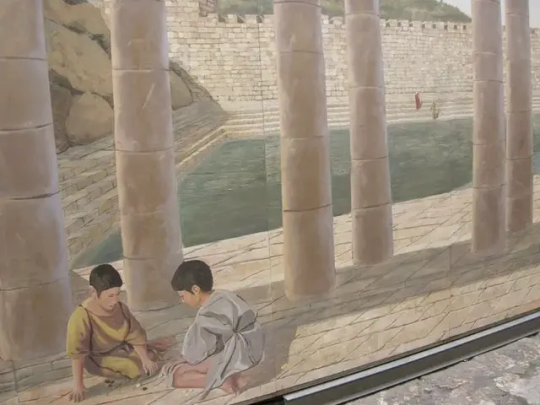

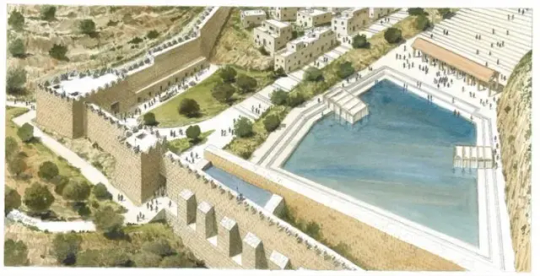
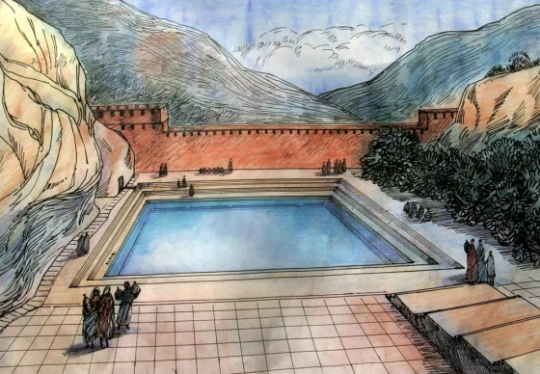
#Biblical Steps Where Jesus 'Healed a Blind Man' Unearthed by Archaeologists#Jerusalem#Israel#City of David#Pool of Siloam#Pilgrimage Road#King Hezekia#Jesus#Jesus Christ#ancient artifacts#archeology#archeolgst#history#history news#ancient history#ancient culture#ancient civilizations#ancient israel
130 notes
·
View notes
Text
Archaeology / A rare 2,000-year-old enigmatic stone box, evidence of the destruction of Jerusalem, revealed for the first time
Archaeology / A rare 2,000-year-old enigmatic stone box, evidence of the destruction of #Jerusalem, revealed for the first time
The box discovered during the Israel Antiquities Authority excavations in the City of David. Photograph Zohar Shemesh, Israel Museum, Jerusalem
A rare multi-compartment stone container, dating back to the days of the Second Temple – about 2,000 years ago, is being revealed to the public for the first time at the Israel Museum, Jerusalem. The unusual and rare box was discovered during excavations…
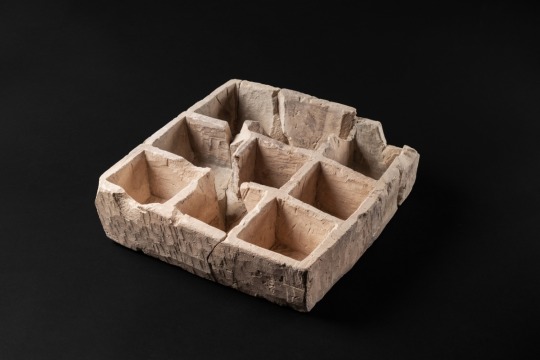
View On WordPress
#archaeology#Ari Levy#City of David#English news#excavations#In evidenza#Israel#Israel Antiquities Authority#Jerusalem#Pilgrimage Road#Yuval Baruch
0 notes
Text
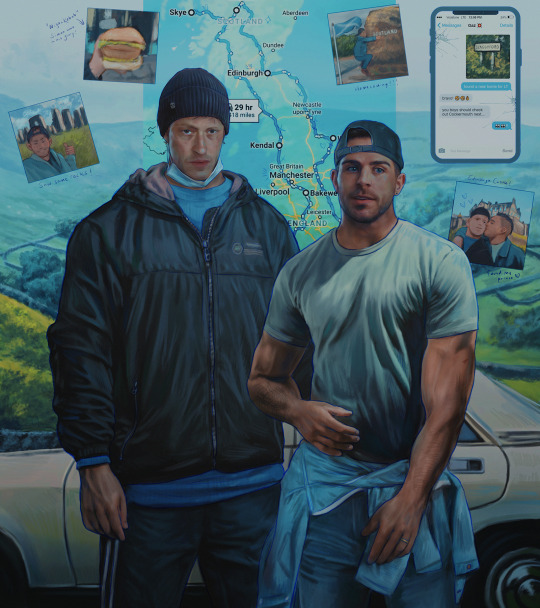
detour 🚘
#call of duty#cod#simon ghost riley#john soap mactavish#ghostsoap#my art#I will never stop drawing Johnny as the world's friendliest douchebag#and Simon as a homeless lesbian#for this pilgrimage they only packed cigarettes condoms and a can of beans with two forks btw#reminds me of the road trip we took in England last year...#does that angry guy from York know that we still quote him regularly in the family group chat??#what a legend 🙌
2K notes
·
View notes
Text
pitched battle inside my brain between the part of me that's desperately shaking myself by the shoulders going "YOU HAVE GOT TO ACTUALLY LIVE THE KIND OF LIFE YOU IMAGINE INSTEAD OF JUST SITTING AROUND IMAGINING IT UNTIL YOU DIE!!" and the part of me that's clutching my face going "is this allowed? is this allowed?? is this allowed???"
#trying to plan a solo cicada pilgrimage and getting brainworms about it yeehaw#'making a lot of plans and never actually doing things in real life' has been a problem for literally as long as I can remember#but I also feel like I've developed a learned helplessness over the last several years that's gotten worse as I've gotten older??#me age twenty: I think I'm gonna take myself to chicago next week because I feel like going to the zoo#me age thirty: am I allowed to go camping alone. am I allowed to do a solo road trip. I need a grownup#to be extremely clear I am very much allowed and this is not justin's fault and I don't know where it comes from#like I'll run things by him lowkey seeking 'permission' that I don't even need and he'll be like 'yeah that sounds good to me'#and then I STILL won't do the thing because like. my brain keeps insisting there needs to be a grownup in charge?? HELLO I'M GROWNUP#anyway I'm doing cicada trip solo BECAUSE-- the drive is so long I want to do five days because two of them will just be driving#and he can't get that much time off work right now#AND because I literally only want to Be Camping and Looking At Bugs but he'd get bored of a week of that he likes Activities#me this morning getting insecure and weird: what are your thoughts... on cicada voyage....#him after at first not even understanding the question: I'm SO excited for you?? you deserve to get to go absolutely feral???#I do.... ;n; 💕 why am I so scared to be a person.......#about me#cicada quest
33 notes
·
View notes
Text

If I Please You || Dream of the Endless/Hob Gadling || Explicit || WIP
Bandits & Outlaws , What You Need vs. What You Want, Dream of the Endless | Morpheus is Bad at Feelings, Hob Gadling is Too Good at Feelings, Two Men with Issues Go to Canterbury, Learning to Understand Joy, Learning to Accept What You Want, Medieval AU but the Medieval isn't the AU Part, There's Also Sex, Frottage, Masturbation, Outdoor Sex, Altar Sex, Rimming, Blow Jobs, Voyeurism, Pining, Devotion
“I’ll guard you for a night,” Hob says, “and say I please you, you can either pay me for a day’s work, or keep me on ‘til you reach where you’re going.”
A strange lord enters a tavern. Hob Gadling makes a deal.
[Read on AO3]
(thank you to good bud @landwriter for allowing me to study and consume your post design!)
#the sandman fanfiction#the sandman fic#the sandman#dreamling#dream of the endless/hob gadling#dream/hob#medieval AU#road trip but with horses#it's a pilgrimage to Canterbury but also they fuck
115 notes
·
View notes
Text
Planning Your Langtang Valley Trek - 11 Days: Tips and Advice
The Langtang Valley Trek is one of Nepal's most accessible and beautiful trekking routes, offering a blend of stunning natural landscapes, cultural insights, and a sense of adventure. Situated north of Kathmandu, close to the Tibetan border, the Langtang Valley is often described as the "Valley of Glaciers." Here is a comprehensive guide to planning your 11-day trek to ensure a memorable and smooth experience.
Day 1: Arrival in Kathmandu
Preparation:
Flights and Visas: Ensure your flights to Tribhuvan International Airport are booked well in advance. A tourist visa for Nepal can be obtained on arrival or online.
Accommodation: Book a hotel in Kathmandu for your first and last nights. Thamel is a popular area for trekkers, with numerous lodges and guesthouses.
Permits: Obtain your Langtang National Park permit and TIMS (Trekkers’ Information Management System) card from the Nepal Tourism Board office in Kathmandu.
Activities:
Rest and acclimatize after your journey.
Explore Kathmandu’s heritage sites, such as Swayambhunath (Monkey Temple) and Durbar Square.
Day 2: Drive from Kathmandu to Syabrubesi| Duration: 7-8 hours
Route:
Start early to avoid traffic. The drive takes you through scenic landscapes and terraced fields.
Roads can be bumpy and challenging, especially during the monsoon season.
Tips:
Consider hiring a private jeep for comfort, though public buses are a more budget-friendly option.
Pack snacks and water, as stops along the way can be limited in options.
Day 3: Trek from Syabrubesi to Lama Hotel| Duration: 6-7 hours| Elevation: 1,503m to 2,470m
Route:
Begin your trek along the Langtang Khola (river). The trail passes through dense forests of oak, rhododendron, and bamboo.
Keep an eye out for local wildlife, including red pandas and langur monkeys.
Tips:
Start early to avoid the afternoon heat.
Wear sturdy trekking boots and carry trekking poles for stability.
Day 4: Lama Hotel to Langtang Village| Duration: 6-7 hours| Elevation: 2,470m to 3,430m
Route:
Continue along the river through forests and across several suspension bridges.
The trail opens up, revealing breathtaking views of the Langtang Lirung peak (7,227m).
Tips:
Take breaks to acclimatize and enjoy the scenery.
Stay hydrated and watch for signs of altitude sickness.
Day 5: Langtang Village to Kyanjin Gompa| Duration: 4-5 hours| Elevation: 3,430m to 3,870m
Route:
The trail gradually ascends, with spectacular views of snow-capped mountains.
Visit the ancient Kyanjin Gompa monastery and the local cheese factory.
Tips:
Spend the afternoon exploring the village and surrounding areas.
Taste the locally made yak cheese.
Day 6: Acclimatization Day in Kyanjin Gompa
Activities:
Kyanjin Ri Hike: Climb to Kyanjin Ri (4,773m) for panoramic views of the Langtang range.
Tserko Ri: For a more challenging hike, ascend Tserko Ri (5,000m) early in the morning.
Tips:
Take it slow to adjust to the altitude.
Enjoy the local culture and interact with the villagers.
Day 7: Kyanjin Gompa to Lama Hotel| Duration: 6-7 hours
Route:
Retrace your steps back to Lama Hotel.
Descending is generally easier, but be mindful of your knees.
Tips:
Use trekking poles to reduce impact on your joints.
Stay vigilant for wildlife and changing weather conditions.
Day 8: Lama Hotel to Syabrubesi|Duration: 5-6 hours
Route:
Continue descending through the lush forests.
Reflect on your journey and take in the final views of the Langtang Valley.
Tips:
Enjoy a leisurely pace and take plenty of photos.
Celebrate your trek with fellow trekkers upon arrival.
Day 9: Drive from Syabrubesi to Kathmandu| Duration: 7-8 hours
Route:
Return to Kathmandu by jeep or bus.
The journey offers another chance to enjoy Nepal’s diverse landscapes.
Tips:
Prepare for a long, bumpy ride and bring entertainment or a good book.
Arrange your accommodation in Kathmandu in advance.
Day 10: Rest and Explore Kathmandu
Activities:
Sightseeing: Visit Pashupatinath Temple, Boudhanath Stupa, and Patan Durbar Square.
Shopping: Thamel offers a variety of souvenirs, trekking gear, and handicrafts.
Cultural Experience: Enjoy traditional Nepali cuisine and cultural shows.
Tips:
Hire a local guide for a more enriching experience.
Keep your valuables secure and be cautious of crowded areas.
Day 11: Departure
Preparation:
Confirm your flight details and arrange transport to the airport.
Reflect on your trek and plan your next adventure!
Tips:
Ensure all your documents and souvenirs are packed safely.
Leave early for the airport to avoid any last-minute rush.
Additional Tips and Advice for the Langtang Valley Trek
Health and Safety
Vaccinations: Ensure you are up-to-date with necessary vaccinations. Consult with your healthcare provider.
Altitude Sickness: Acclimatize properly, stay hydrated, and know the symptoms of Acute Mountain Sickness (AMS). Consider carrying Diamox as a precaution.
Travel Insurance: Obtain comprehensive travel insurance that covers high-altitude trekking and emergency evacuation.
Packing List
Clothing: Layered clothing, including thermal wear, waterproof jacket, down jacket, trekking pants, gloves, and a warm hat.
Footwear: Sturdy, broken-in trekking boots and multiple pairs of socks.
Gear: Sleeping bag (rated for cold temperatures), trekking poles, a headlamp, and a daypack.
Personal Items: First aid kit, water purification tablets, toiletries, sunscreen, and a hat for sun protection.
Food and Accommodation
Tea Houses: Accommodation along the Langtang Valley Trek is primarily in tea houses, which offer basic lodging and meals.
Meals: Expect a variety of dishes, including dal bhat (rice and lentils), noodles, soups, and momo (dumplings). Carry snacks for energy during trekking.
Water: Always drink purified or boiled water. Carry a reusable water bottle and purification tablets or a filter.
Cultural Etiquette
Respect Local Customs: Dress modestly, ask for permission before taking photos, and respect local traditions.
Language: Learning a few basic Nepali phrases can enhance your interaction with locals.
Environmental Responsibility: Follow the principles of Leave No Trace. Dispose of waste properly and minimize your environmental impact.
Guides and Porters
Hiring a Guide: A local guide can enhance your trekking experience with insights into the region's culture, history, and natural environment. They also ensure your safety and navigation.
Porters: Consider hiring a porter to carry your heavy gear, allowing you to enjoy the trek more comfortably and supporting the local economy.
Final Thoughts
The Langtang Valley Trek is a journey through some of Nepal’s most stunning landscapes, rich in culture and natural beauty. By planning carefully and following these tips, you can ensure a safe, enjoyable, and unforgettable adventure. Embrace the local culture, respect the environment, and take the time to savor every moment of this incredible trekking experience. Happy trekking!
#Tsum valley trek distance#best time to visit nepal#road trip#vacation#buddhist pilgrimage sites in nepal
2 notes
·
View notes
Text
@xsqueenix plotted starter

It was the muffled talking that initially roused her from her dreamless sleep. Was it morning already? The white cast from the moon's rays objected her conception and shone it's brilliance upon the sleeping forms of her guardians circled near the dying fire. Eyes gently flutter fully open to garner the status of her environment. The quieted terrified accents—something about "mother"—pulled Yuna out of her sleeping bag, curious to discover the origin where the noise had been produced.

Black boots crunched against dried reeds and sticks surrounding the camp as she ventured closer, nearing the source slightly deeper into the forest and away from the safety of her guardians. But when she could go no farther, her eyes shift and uncover Kadaj's restless sleeping form. He was having a night terror...
Yuna knew better than to touch a writhing person undergoing a state of pure distress—even though she wanted to offer the man comfort with the slight of her warmth, it wouldn't end well for both of them. Instead, Yuna softly calls out to him, as many times as she could. Her voice calm, gentle. Increasing the volume of her tone ever so slightly to pull him out of the horrors that plagued his unconcious.
What was that name he said again? Mother?
Normally, everyone held their mothers in great regard. And Yuna was no different. Though it seemed every time Kadaj let slip her name, he appeared...terrified.
"Kadaj." Yuna repeats, nearly reaching out to touch his shoulder only to draw back just as quickly. "Please. Please wake up...!"
4 notes
·
View notes
Text
Photo of the Day: Tokaido
The Tokaido Road was an official road connecting Tokyo to Kyoto. In Europe, all roads led to Rome. In Japan, all roads led to Edo, present-day Tokyo. More specifically, to Nihonbashi, a bridge in central Tokyo.
This photo was taken in Shizuoka Prefecture on part of that road. This portion is amazingly well-preserved.
The regional lords, daimyo, were required to visit Edo every other year. It…

View On WordPress
3 notes
·
View notes
Text
A walk along the Via Francigena from Europe to Italy.

The Via Francigena is an excellent opportunity to develop and enhance sustainable tourism in Europe and Italy. The union and communication between various cultures. A route that crosses Europe from the north to the south of Italy. It is about 3200 km long!
The time has come to focus on slow tourism. The kind of tourism that enhances rural areas and people, villages, and landscapes and combines the beauty of places with culture, art, and gastronomy—not neglecting an important aspect, namely the personal search, and spirituality.
In recent years, the system of hiking trails and cultural itineraries has grown considerably, redeveloping the territory from an environmental and socio-cultural point of view, revitalizing marginal or inland areas, and enhancing those places off the beaten track of mass tourism. Along its 3,200 km of the Via Francigena (United Kingdom, France, Switzerland, Italy), thousands of small companies, hiking, environmental guides, and associations are active and committed to the area to serve the needs of the walkers.
Today it is estimated that thanks to the thousands of pilgrims, the economic fallout of this Council of Europe cultural routes, which crosses Italy (10 regions, 400 municipalities) for more than 2,000 km, exceeds 20 million Euros. The Via Francigena can be considered our "Way of Santiago": the way that leads to Rome and the ports of Apulia is the flagship of the international pilgrimage. Every year, pilgrims from over 40 countries walk this route on foot or by bicycle. Eight out of ten of them come back as tourists after their journey.
It is crucial, however, not to divide Italy into hundreds of walks because this would risk weakening the tourism infrastructure with no central itinerary around which to create an alternative model of slow cultural tourism, as has been happening (for the last 30 years) in Spain with the path that leads to Santiago de Compostela.
The Via Francigena is and remains a great opportunity around which it will be possible to strengthen the Italian tourist brand worldwide and develop an incredible network of regional, national, and international itineraries.
This is an ambitious project, claims Luca Bruschi - Director of the Via Francigena European Association. "We want to give value to all the work that has been done up to now by recognizing that the Via Francigena is representative of the factors of growth, exchange, and comparison between people coming from different countries."
The Via Francigena and Santiago di Compostela are among Europe's most prestigious cultural routes. It is also a model for sustainable development, stretching over 3.200km from Kent to Apulia, and is one of the world's best-known pilgrimage routes.
It is a tourist offer with an unprecedented response to the demand of people for a new way of enjoying the territory in their leisure time. A journey that affects individual growth and emphasizes meeting people and local communities along the route.
Initially posted by Luca Bruschi in ⏩ La #ViaFrancigena rappresenta una grande opportunità per lo sviluppo territoriale e turistico in Eurupa e in Italia.
⏩ The Board Behind
#cultural routes#via Frangigena#road to rome#The Board Behind#travel trough europe#hiking#trails#itineraries#rural scene#traditions#caminodesantiago#heritage#pilgrimage#travel photography#frangigena ways#slow travel#slow tourism
10 notes
·
View notes
Note
I read fig tag and road trip au as the same word and got fag trip
Which is also accurate thx dyslexia
yeah they're on a fuckin fag trip alright
1 note
·
View note
Text
The Wandering Tale of the Pilgrim Haunting on Camino de Santiago
Still walking his pilgrimage on the Camino de Santiago, the ghost of a lost pilgrim is said to haunt a stretch of road. Still with his staff in hand, he appears in cars in Huesca in Spain and some even claim the ghosts are there to harm them.
Still walking his pilgrimage on the Camino de Santiago, the ghost of a lost pilgrim is said to haunt a stretch of road. Still with his staff in hand, he appears in cars in Huesca in Spain and some even claim the ghosts are there to harm them.
There’s something eerie about walking alone on a secluded path, surrounded by dense forests, abandoned ruins, and the silence of the night. But what if…

View On WordPress
0 notes
Text
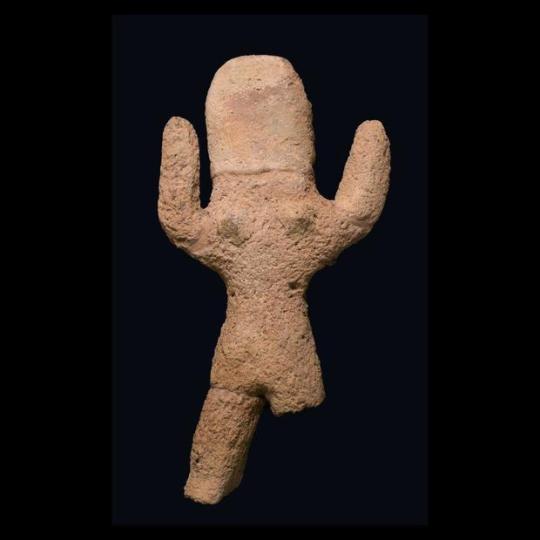
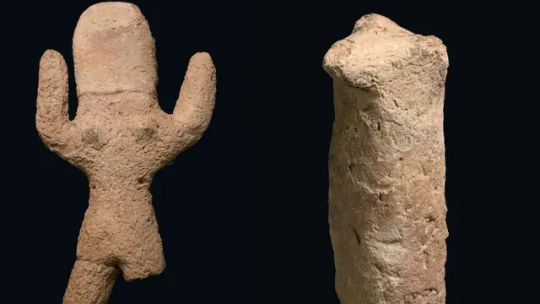

Artifacts Found in Israel were used by "Sorcerers" in "Magical Rituals" 4 Centuries Ago
Israeli researchers have uncovered artifacts that "professional sorcerers" used in "magical rituals" hundreds of years ago, the Israel Antiquities Authority said in a news release.
The professional sorcerers would have been visited by Muslim pilgrims traveling from Cairo in Egypt to the city of Mecca in the Arabian Peninsula. The rituals would include attempts to ward off the "evil eye," heal diseases and more. The three researchers on the project said in a joint statement that the discovery shows that "people in the Early Ottoman Period — just as today — consulted popular sorcerers, alongside the formal belief in the official religion."
"This is the first time that such a large assemblage of ritual objects of this kind has been found," the researchers — Itamar Taxel of the Israel Antiquities Authority, Uzi Avner of the Dead Sea-Arava Science Center and Nitzan Amitai-Preiss of the Hebrew University of Jerusalem — said in the news release.

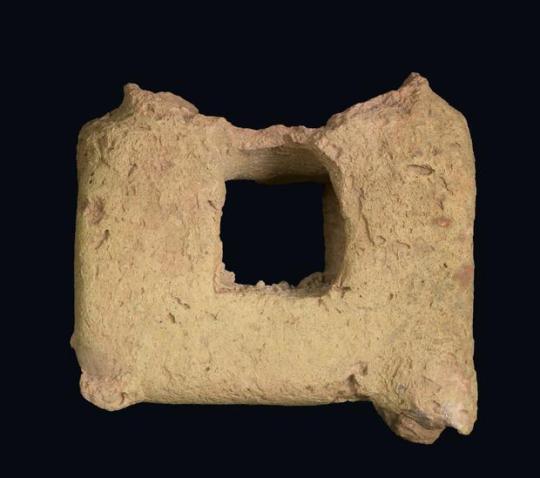
The artifacts were discovered in the late 1990s, at an archaeological site in Southern Israel's Eilat Hills. The finds included "dozens of fragments of clay globular rattles, mostly like table tennis balls, containing small stones, that sound when the rattle was shaken" and "two artifacts like miniature votive incense altars, a small figurine of a naked woman or a goddess with raised hands, a characteristic feature of deities or priests, a few other figurines, and colored quartz pebbles." The items were found broken, which the researchers said might have been intentional and done during the ritual ceremonies. An analysis of the clay the items were made of showed that they came from Egypt.
The artifacts were found along the Pilgrimage Road, also known in Arabic as the Darb al-Hajj, which ran from Cairo to the Arabian Peninsula. Camping sites and structures have also been found along the route in the same area the artifacts were found. Researchers believe these areas began to be used in the thirteenth or fourteenth centuries.
"The find-spot of these artifacts next to the camping site, and the comparison of the artifacts to those known in the Muslim world, as well as the fact that these artifacts were found together as a group, lead to the understanding that they were used in magical rituals," the researchers said. "It seems that these rituals were carried out at the site by one or several people who specialized in popular magical ceremonies."
By Kerry Breen.
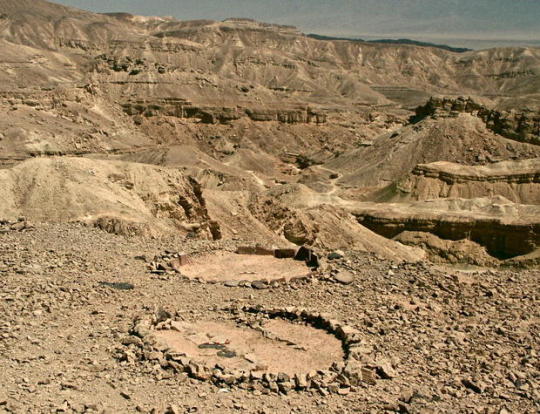

#Artifacts Found in Israel were used by “Sorcerers” in “Magical Rituals” 4 Centuries Ago#Arabian Peninsula#Early Ottoman Period#Eilat Hills#Pilgrimage Road#evil eye#black magic#ancient artifacts#archeology#archeolgst#history#history news#ancient history#ancient culture#ancient civilizations#ancient israel#israeli history
23 notes
·
View notes
Text
ARCHAEONEWS / 400-years-old Magical Artifacts Discovered along the Route from Egypt to Mecca
#ARCHAEOLOGY #NEWS
400-years-old Magical Artifacts Discovered along the Route from Egypt to Mecca
This discovery reveals how people in the Early Ottoman Period consulted popular sorcerers, alongside the formal belief in the official religion
#magic
Clay female figurine. Photo Clara Amit, Israel Antiquities Authority
On the road to Mecca in Saudi Arabia, one could stop at a professional sorcerer: it seems that Muslim pilgrims en route from Cairo in Egypt to Mecca in the Arabian Peninsula, about four centuries ago, would make a stop at these professional sorcerers. A research recently published in the Journal of Material Cultures in the…

View On WordPress
#archaeology#Cairo#Egypt#excavations#Israel#Israel Antiquities Authority#Journal of Material Cultures in the Muslim World#magic#Mecca#muslim#Pilgrimage Road#pilgrims#research#Saudi Arabia
1 note
·
View note
Video
Char dham yatra by helicopter 2024 | Char Dham Yatra Package #chardhamya...
#youtube#Embark on a Spiritual Journey with Char Dham Yatra by Road! Join ABD Holidays Pvt. Ltd. for an awe-inspiring pilgrimage to the sacred Char D
1 note
·
View note
Text
Ayodhya, the city, established on the banks of river Saryu, is the holiest place for the people of the Hindu religion because Lord Shri Ram was born here. Evidence of Lord Rama and many ancient places related to him are present here. The city of Ayodhya remains in the limelight because there have been disputes regarding the Lord Rama temple located here. Ayodhya city is quite close to Lucknow. Do add Ayodhya to your travel list to explore the city of Lord Rama. To travel by road the best way is to book a cab. Chiku Cab can be your companion for your journey from Lucknow to Ayodhya. Inorder to learn more visit the website.
0 notes
Text

A divine journey to Kamakhya Devi in Sikkim and Nepal, experiencing spirituality, cultural richness, and breathtaking beauty. Join us for a soul-stirring pilgrimage.
Book Your Spiritual Yatra
Web: https://shivshankartirthyatra.com/
Call: 9412050868
KamakhyaDevi #Sikkim #Nepal #Yatra #Pilgrimage #Spirituality #CulturalRichness #DivineBeauty #SacredJourney #Hinduism #Travel #Explore #Blessings #YatraExperience #SikkimTourism #DivineExperience #Pilgrimage #Spirituality #InnerPeace #Enlightenment #SoulfulTravel #YatraExperience #MindfulJourney #DivineEncounter #NepalTourism #SacredDestinations #CulturalHeritage #PeacefulRetreat #TravelInspiration
#spiritual yatra#yatra#shiv shankar tirth yatra#rishikesh#delhi#pilgrimage#divineyatra#soulfultravel#nepalyatra#road trip
0 notes